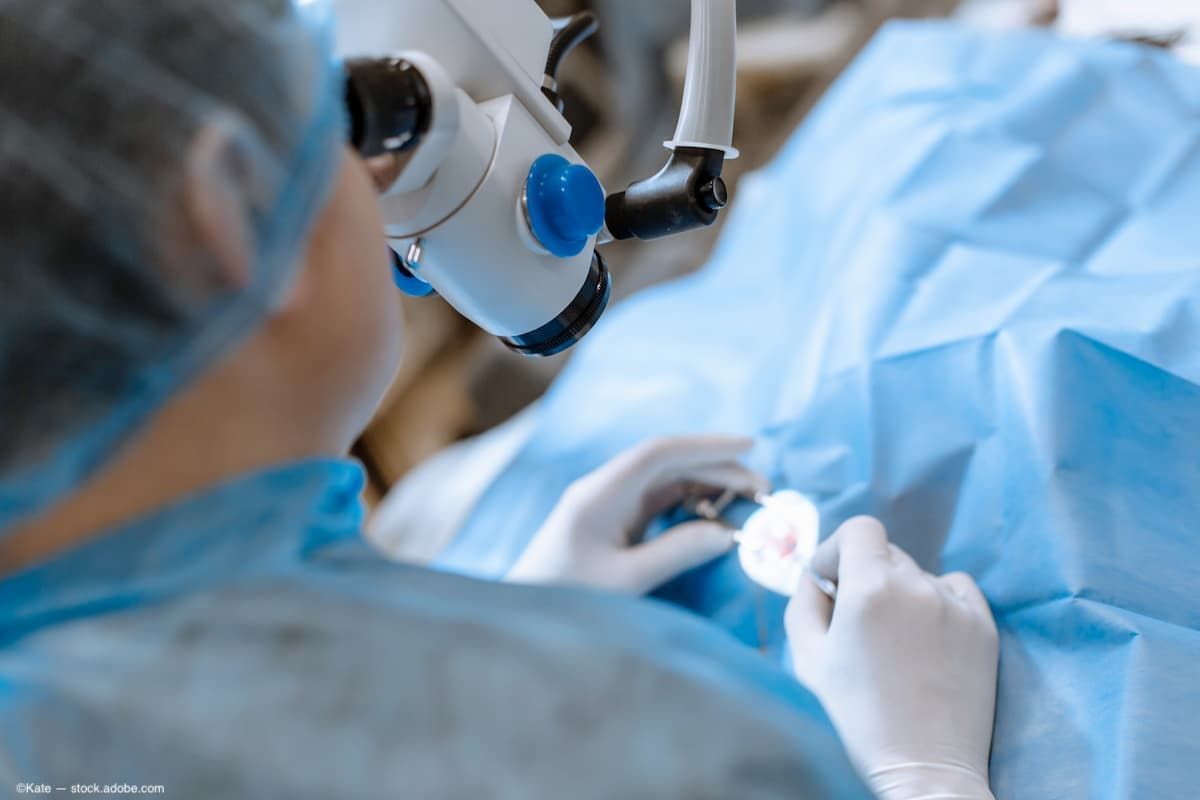News
Article
Retrospective chart review: Development of endophthalmitis after dropless cataract surgery
Author(s):
Authors looked at 6 unexpected cases of endophthalmitis after cataract extraction during 1 day of cataract surgeries.
(Image Credit: AdobeStock/Kate)

Dropless cataract surgery eases the treatment burden for patients. However, clinicians offer a caveat in that “the injection of batch solution in dropless cataract surgery creates a risk of cohort infection” following the recognition of 6 unexpected cases of endophthalmitis after cataract extraction. Bhargavee Gnanasambandam, MS, from the Carle Illinois College of Medicine, Urbana, IL, and co-authors described their findings during the American Society of Cataract and Refractive Surgery annual meeting in Boston.1
While the development of endophthalmitis is a rare event, ie, 1 in 5,000 cases, the 6 cases described occurred during 1 day of cataract surgeries. When physicians use dropless cataract surgery, triamcinolone, moxifloxacin, and/or vancomycin are injected intracamerally to prevent injection.
Retrospective chart review
Gnanasambandam and colleagues conducted a retrospective review of the medical charts of 6 of 12 patients who developed endophthalmitis or excessive inflammation in October 2019 after 1 surgeon performed the uncomplicated cataract surgeries on 1 day.
In all of the patients, Tri-Moxi injection 0.1 mL (lot # 19SEP036, Imprimus) was administered at the end of the surgeries and the patients were followed in the postoperative period. The parameters evaluated included patient age and sex, visual acuity converted to logarithm of the minimum angle of resolution (logMAR) units, treatment regimen, symptoms at onset, comorbidities, and the final outcome.
The investigators reported that 12 patients underwent cataract surgery; of these, endophthalmitis or toxic anterior segment syndrome were diagnosed in 3 patients each. The average patient age was 64.5 years; 4 patients were women, 2 were men.
All of the 6 affected patients presented with complaints of visual disturbance and worsening vision from 2 to 4 days postoperatively. The average logMAR visual acuity was 0.5 ± 0.35 (Snellen vision, 20/90); the average visual acuities preoperatively and postoperatively were 0.34 ± 0.14 (20/45) and 0.075 ± 0.09 (20/25), respectively.
Two patients had Fuchs’ dystrophy. The patients with endophthalmitis were treated with vancomycin and ceftazidime. All patients were followed for 54.7 ± 40.1 days postoperatively, the investigators reported.
The authors concluded, “While dropless cataract surgery reduces the burden of eye drop application, the injection of batch solution in dropless cataract surgery creates a risk of cohort infection. Further research is warranted into the risk of postoperative infection with patients treated in this manner.”
Conference Abstract or Poster
Gnanasambandam B, Person EA, Moran E, et al. Six unexpected cases of endophthalmitis after dropless cataract surgery. Paper presented at: American Society of Cataract and Refractive Surgery 2024 annual meeting; April 5-8, 2024; Boston, Massachusetts, USA. Session: SPS-104 Cataract Surgery-Other
Newsletter
Don’t miss out—get Ophthalmology Times updates on the latest clinical advancements and expert interviews, straight to your inbox.




